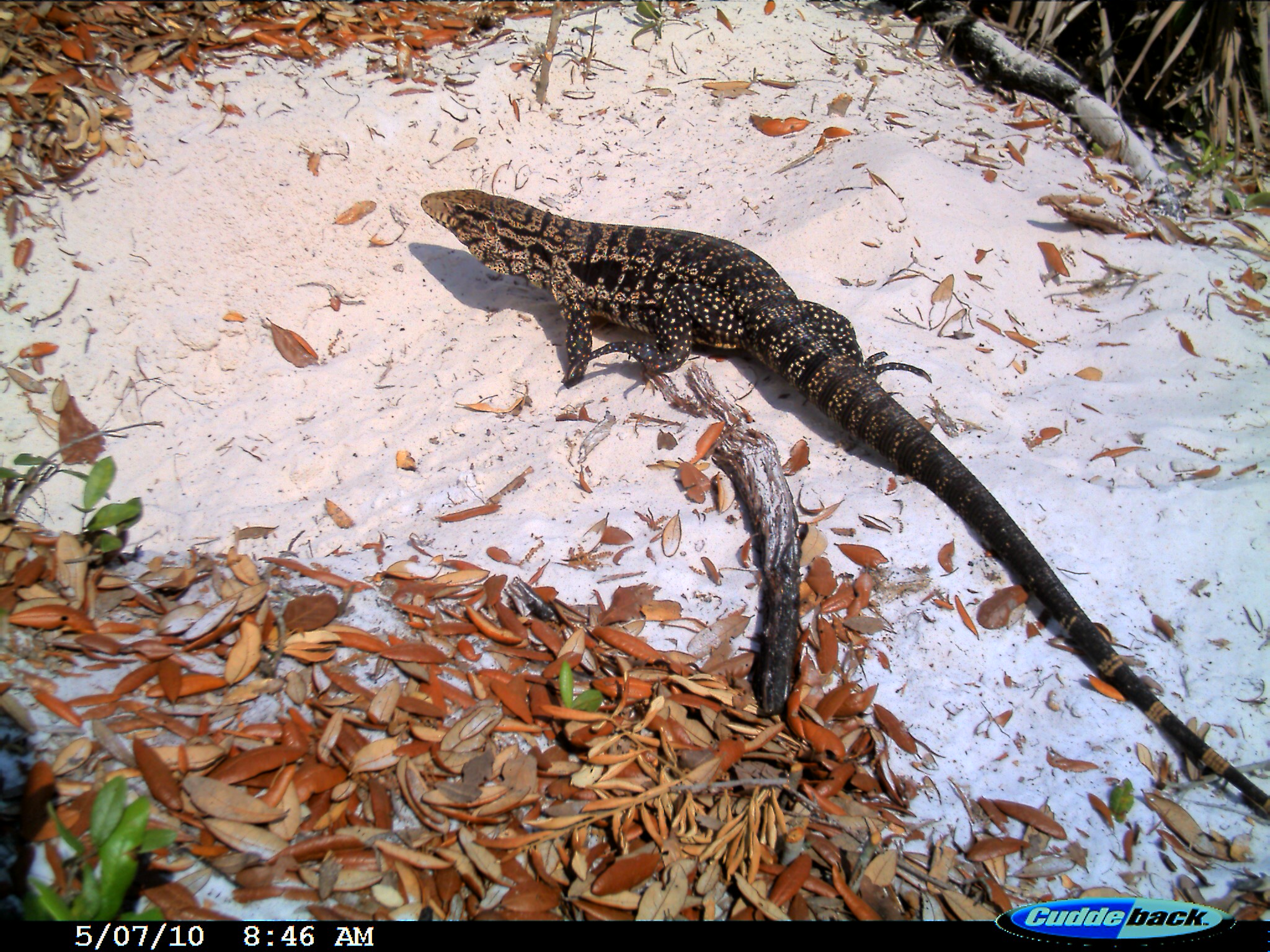Argentine tegu lizards first began prowling Hillsborough County’s desert-like scrub back in the early 2000s.
The enormous black and white lizards have proven elusive and difficult to apprehend. The problem is much worse in South Florida.
“We haven’t been trapping them anymore because we don’t have the manpower or the money,” said Bernard Kaiser, Hillsborough County’s Environmental Lands Research Analyst. “To be honest, I don’t really know” how many are out there these days.
The problem with this invasive species is that they will eat about anything, including alligator eggs and baby gopher tortoises, an imperiled species.
Kaiser and his team did use a federal grant in 2010-2011 to evaluate various methods of detecting tegus in the wild, because no one really knew how to look for them.
The U.S. Fish & Wildlife Service grant paid to chop up fire-suppressed scrub habitat in southern Hillsborough County and test four methods of tracking the lizards. “We used track plots, where we would smooth the sand out and look for tracks,” Kaiser said. “We tried cameras on gopher tortoise burrows and standard herp fences. The last method we tried was simple pedestrian transects through the scrub,” or walking around looking for them.
The track plots proved the most useful and required the least amount of labor, so it is a method others can use across Florida, Kaiser said.
The Florida Fish and Wildlife Conservation Commission has successfully trapped hundreds of tegus in South Florida, where most of the effort centers, but have only trapped a few in this area.
University of Florida scientists say the tegu population is continuing to grow, even though cold weather drives them underground during the winter months. They have been reported in 35 counties across Florida.
A recent paper co-authored by the University of Florida and its partner agencies states that tegus also eat the eggs of rare birds, which are biological indicators of Everglades restoration.
Miami-Dade County has been the hardest hit, but Hillsborough County is also high on the list.
“The accumulation of exotic reptiles and amphibians in Florida has been called a ‘runaway train’ that has yet to be controlled,” the UF paper states. “Based on twenty years of field work and an examination of museum records and literature, no other place in the world ranks as having a higher number of introduced reptile and amphibian species than the state of Florida. Of 63 established exotic reptilian and amphibian species, 48 are lizards. South Florida is especially at risk because of its subtropical climate, large areas of disturbed habitats, and thriving trade in exotic pets. Although pythons receive the majority of public attention, large invasive lizards also pose a significant threat to south Florida’s native wildlife and ecosystems.”
The tegu is among the invasive reptiles introduced in Florida through the pet trade. They grow up to four feet in length and females can lay an average of 35 eggs each year. It is one of the largest lizard species in the Western Hemisphere.
The UF study authors say there is newly emerging population of tegus in St. Lucie County and a few sightings in both Palm Beach and Broward counties. Also, in addition to Hillsborough and Charlotte counties, tegus are establishing in several Georgia counties and in Alabama.
Officials in Georgia urge anyone who sees a tegu to report it, whether it is dead or alive. This helps biologists document their activity.
According to National Geographic, the U.S. Geological Survey conducted a study of tegus in South America to determine what might happen here. The study indicated the lizards could spread across the entire southeastern portion of the U.S.




























